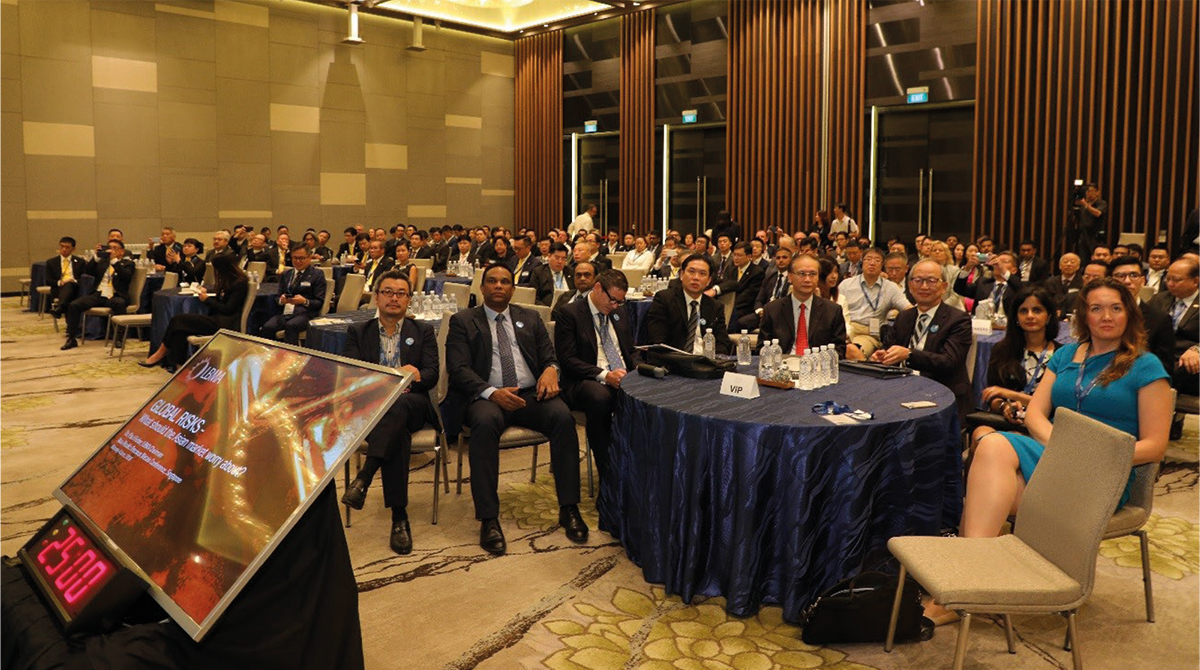Navigate
Article List
- Artificial Intelligence Application in Algorithmic Trading: Two-day Workshop
Organised by SBMA, 16 & 18 October 2018
- Malaysia’s Precious Jewellery Market
By Ermin Siow, President, Federation of Goldsmiths and Jewellers Association of Malaysia, 2014-2018
- Why Do Turkish Banks Hold Gold at the Turkish Central Bank?
By Aslı Şahin, FX & Precious Metals Specialist
- The Impact of Artificial Intelligence on Trading and Finance
By Gordon Cheung, Deputy Chief Executive, SBMA and Avirath Kakkar, Head of Strategy, EIS Global Capital Management
- Gold and Blockchain: A Win-Win Combination
By Nikita Knyazev, Head of Commerce, A-Ventures
- SBMA News
By Albert Cheng, CEO, SBMA
Article List
- Artificial Intelligence Application in Algorithmic Trading: Two-day Workshop
Organised by SBMA, 16 & 18 October 2018
- Malaysia’s Precious Jewellery Market
By Ermin Siow, President, Federation of Goldsmiths and Jewellers Association of Malaysia, 2014-2018
- Why Do Turkish Banks Hold Gold at the Turkish Central Bank?
By Aslı Şahin, FX & Precious Metals Specialist
- The Impact of Artificial Intelligence on Trading and Finance
By Gordon Cheung, Deputy Chief Executive, SBMA and Avirath Kakkar, Head of Strategy, EIS Global Capital Management
- Gold and Blockchain: A Win-Win Combination
By Nikita Knyazev, Head of Commerce, A-Ventures
- SBMA News
By Albert Cheng, CEO, SBMA
Asia Pacific, Technology Expected to Drive Transformation of the Gold Market
By SBMA
Published on September 19, 2018

SBMA’s second Asia Pacific Precious Metals Conference showcased the sector’s tremendous growth in Asia Pacific on the back of high demand for physical gold and technology that is making precious metals trading more accessible and efficient for consumers.
Wealth is the most significant factor driving the price of gold, the World Gold Council’s Market Intelligence Group Director, Mr Alistair Hewitt, said at the 2nd Asia Pacific Precious Metals Conference in his keynote address, “The Gold Market in the Next Five to Ten Years and its Implication for Asia Pacific Countries”. With global GDP continuing to rise and Asia contributing to a bigger share of the pie as its capital markets develop, the demand for gold can only be expected to grow, Mr Hewitt said.
Asia Pacific consumers are getting richer, but their preferences are changing. As such, consumer-facing gold businesses need to adapt and evolve.
According to him, Asia Pacific consumers are getting richer, but their preferences are changing. As such, consumer-facing gold businesses need to adapt and evolve, he said, citing a generational shift in views and attitudes towards gold. Mr Hewitt pointed out that growing education, better internet access, and increased urbanism and international travel are contributing to changing consumer behaviour. He cited the competition gold jewellery is facing from diamond jewellery in urban India, and the competition it is facing with technology in China, particularly among younger consumers, who would choose a smartphone or tablet over fine gold.
At the same time, new markets are opening up with the introduction of gold-backed exchange-traded funds that are making the precious metal more accessible; the gold spot exchange that is being developed in India, the world’s biggest gold market after China; and the Shari’ah Standard on Gold, which is creating new products and stimulating demand among Muslim consumers.
New markets are opening up with the introduction of gold-backed exchange-traded funds that are making the precious metal more accessible.
Mr Hewitt also added that technology is changing the landscape of the industry – a sentiment echoed by participants of the Technology in the Precious Metals Industry panel, who discussed the rapidly evolving gold fintech landscape. While the panellists agreed that fintech is making gold more accessible and is making trading more efficient and safe, no one was certain about how they expected things to pan out.
Digital gold and technology have a range of benefits for the precious metals industry, Gregor Gregersen, Founder, Silver Bullion and The Safe House, said, including reducing settlement risk, enabling real-time settlements, providing clarity in asset provenance, inventory/collateral management, and streamlining trade finance. Innovations discussed during the panel included bullion-secured peer-to-peer lending (The Safe House), making transactions in gold from a debit card (Glint), how digital gold can reduce settlement risk (Paxos), as well as blockchain tracking for gold (Everledger).
While all these innovations leverage gold’s reliability and function as a store of value, the current manual processes the industry relies on limit the benefits of digital gold, Mr Seth Philips, Executive Director and Head of Precious Metals at Paxos, said, adding, “Digital gold will provide massive benefits to the wholesale precious metals market, but we have to lay the groundwork now”.























